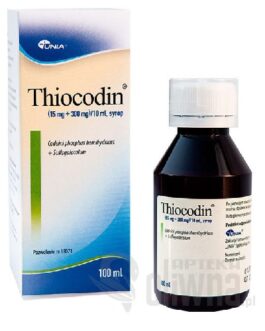The effects of codeine are due to its conversion into morphine in the body. Some people convert codeine to morphine at a faster rate than normal, resulting in high levels of morphine in their blood. High levels of morphine can lead to serious effects, such as breathing difficulties.
The new measures follow a review by EMA’s Pharmacovigilance Risk Assessment Committee (PRAC). The PRAC considered that, although morphine-induced side effects may occur in patients of all ages, the way codeine is converted into morphine in children below 12 years is more variable and unpredictable, making this population at special risk of such side effects. In addition, children who already have problems with their breathing may be more susceptible to respiratory problems due to codeine. The PRAC also noted that cough and cold are generally self-limiting conditions and the evidence that codeine is effective at treating cough in children is limited.
In addition to the new measures for children, codeine must also not be used in people of any age who are known to convert codeine into morphine at a faster rate than normal (‘ultra-rapid metabolisers’) nor in breastfeeding mothers, as codeine can harm the baby because it passes into breast milk.














